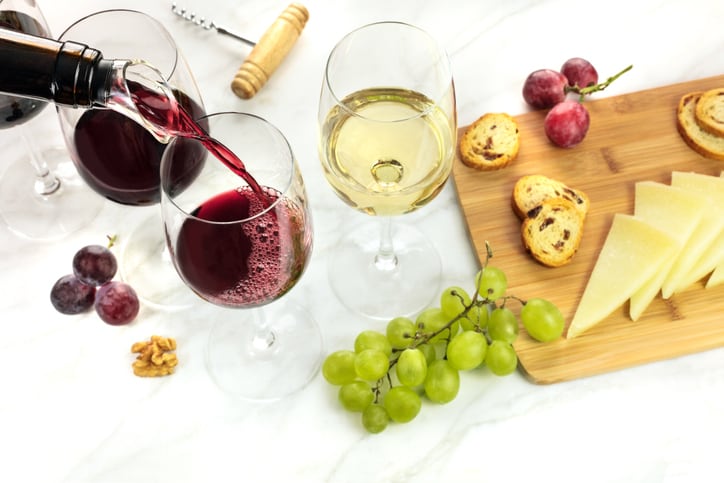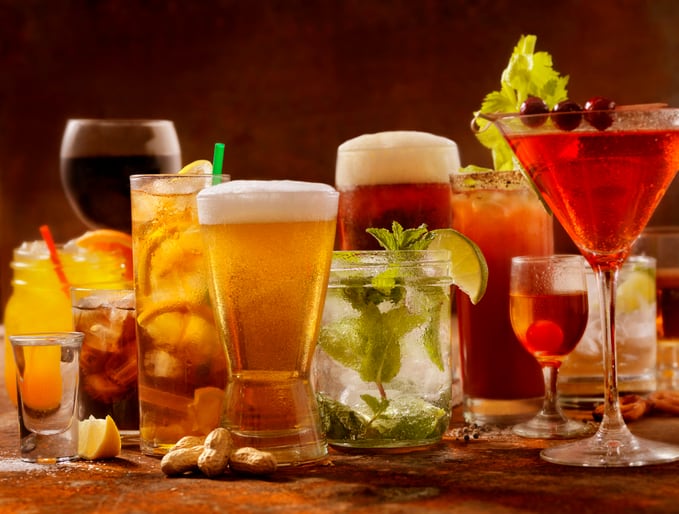The cuisine-paired profiles follow Synergy’s launch of botanical extracts in January 2022, targeted at the low- and no-alcohol category.
The new flavour combinations include a mango, lime, and mint blend, which complements the flavours typically found in Indian cuisine, and pineapple, coconut, and lemongrass, to work in harmony with the tastes of Thai dishes. Other perfectly paired creations include; Sicilian lemon and bergamot to pair with Italian cuisine; salted cherry and ginger to complement Chinese cuisine; plum, orange and chilli which works in harmony with the British roast dinner and finally green tea, lemon and mint which can accompany Greek fare.
A Good Sense Research report commissioned by Synergy found that 87% of respondents said that they were interested in purchasing a soft drink which would pair with their chosen cuisine. According to the flavours supplier, this demonstrates a clear need and opportunity for both soft drinks and non-alcoholic beverages to add value with more exciting options for mindful consumers. There is the opportunity to create balanced and refreshing drinks with optimised pairings that are more interesting than water, but pair better than a sweet cola or lemonade, it stated.
On top of recent data from IWSR Drinks Market Analysis estimating Low/no alcohol consumption to rise a third by 2026, the low- and no-alcohol market is predicted to grow by 67% to £286m by 2026, according to Mintel. And with 49% of UK adults reporting to not drink any alcohol, or planning to reduce intake, this translates to 25 million potential consumers of low- and no-alcohol or premium soft drinks, Synergy said. The beverage market is therefore primed for innovation, to diversify and enhance options for consumers who are looking for an alternative to alcohol.
Vicky Berry, Senior European Business Development Manager, Synergy Flavours said: “Carefully crafted and paired flavours in soft drinks can encourage the same attention to cuisine compatibility that is well established in wine and has become commonplace in beer. We have seen from our commissioned research that 55% of adults choose water or sparkling water with a main – so there is a real opportunity to capture the attention of the water drinker with more interesting beverages which taste nice on their own, while also enhancing the taste of a dish. We take inspiration from other beverage categories as well – for example, alcoholic beverages or tonics. In mixers, we are seeing more herbs and spices appear including lemongrass, basil, and peppercorn.”
Flavour research analyst, Charlotte Spitzner, Synergy Flavours, added: “We approach developing flavours which pair with cuisines by exploring key aroma compounds in a specific cuisine, using a combination of in-house analysis and extraction techniques, alongside our research platforms and databases.”
Food items that share flavour compounds have the potential to pair well with each other and improve the overall sensory experience of the consumer. After investigating possible pairings informed by science, Research Analysts then work with application and flavour development teams to create the best performing flavour combinations for the specific food item. As an example, to pair with the UK’s favourite global cuisine, Indian, Synergy developed a pairing of mango, lime and mint. The mango pairs with Citronellol (key compound in pepper) while lime complements Cuminaldehyde (cumin) and Eucalyptol (pepper). Refreshing notes of mint do not only scientifically pair with Indian cuisine but also help to cut through the rich body of some Indian dishes. For Thai cuisine, Synergy paired pineapple, coconut, and lemongrass as a complement to prominent Neral (lemongrass), Cuminaldehyde (cumin) and Aldehyde C18 (coconut).
According to Synergy, the entirety of the drinking experience should be considered when innovating with cuisine-paired beverages – using coconut water for example within a beverage can deliver a slight savoury-salt taste which complements a meal. Balancing sugar and acidity can also help to create a beverage that delivers an optimised experience when consumed alongside food.
'Of course beer pairs with food': sommelier
Beer – including low/no alcohol ones – can definitely make food taste better, the beer sommelier Annabel Smith, who has worked in the UK beer and pub industry for almost 30 years, told FoodNavigator. "Beer and food pairing has been around for years, that's why we have over 200 beer sommeliers in the UK." But she said knowledge has been held back up to now, party by snobbery. “Historically, beer has always been viewed as a poor man's drink that doesn't belong on the dining table. People have been conditioned to say it's wine that goes with food, not beer.”
This assumption is a myth, she explained. The “classic mistake” made by UK consumers, for example, is drinking lager with a curry. This makes the lager taste too bitter and intensifies the chilli heat. “A great beer to have with a curry is a German or Belgium wheat beer,” suggested Smith. “Because it's soft, mousse-like and creamy, it will quench the heat of hot food."
Likewise, Belgium blonde beers “go fabulously with a cheeseboard,” she added. “They are strong and sweet, which cuts through the cheese. Where you have carbonation, that acts like a mini scrubbing brush on your tounge and it will scrub away all that fat from the cheese and act like a palet cleanser ready for your next mouthful of beer and food.”
Another example is stout which pairs well with rich desserts like chocolate tart or tiramisu. "It complements the chocolaty coffee flavours in the beer with the flavour profile of the pudding. They're picking out the flavours in each other."
Rapid improvements in the low/no beer category meanwhile mean that these drinks can pair just as well with food as their alcoholic equivalents.
"The processes of brewing no or low-alcoholic beer have moved on in leaps and bounds over the last 10-15 years so you're now getting the same flavour profile and mouthfeel as the alcoholic variant."
The quality of no and low alcohol has improved massively in just a few short years thanks to wider demand driving improved manufacturing techniques and commercial attention, agreed Andrew Potter, Head Brewer of home brewing kit company Pinter. “If you’re going dry in Jan or generally prefer to drink alcohol-free you’re no longer just stuck with a pint of lime and soda.”
There is a plethora of scrumptious options in a wider variety of beer styles, he noted:
Lager: ‘Lager is the most popular beer style around the world not only because it’s delicate balance of flavours makes it adaptable to any occasion or climate but also because it pairs superbly with all types of cuisines. There are a bunch of excellent low/no lager options out there with subtle grainy characters and spicy hope notes that go great with the classics, like Sausages (be it bratwurst or hot dogs), breads and strong cheddars. However, if you’re planning on trimming down on the fats and carbs during January as well, lager matches perfectly with a Thai green curry, or chicken and salmon dishes.’
IPA: ‘Modern IPAs are normally jam-packed with huge amounts of fruity hop character reminiscent of anything from mango to blackberry to grapefruit. Therefore, foods with similarly bold characteristics marry well such as: burritos, fajitas or barbecued meats and veg. If you’re prepping an indulgent cheese board, mild blue cheeses tend to pair well with most modern IPAs’ tropical characteristics.’
Stout: ‘This is one of the most exciting areas for no and low at the moment with loads of good 0.5% ABV stout options out there this year. Something rich, roasted and unctuous such as pies and stews tend to go down a treat with stouts. But if you’re fancying something a little more decadent, lobster pairs beautifully. However, if you wanted something on the sweeter side desserts with lashings of chocolate and coconut also go well.’
Sour beer: ‘Now there are not as many low and no alcohol sour beers on the market just yet but the ones that are there are super tasty. This is an area we can expect to blow up over the next few years with both low/no and sour beers seeing a huge surge in popularity. Similarly to wine, these sorts of beers pair really well with foods in which the sour beer can cut through some of the fat and richness such as omelettes, a moules mariniere and a big stinky goats cheese.’



